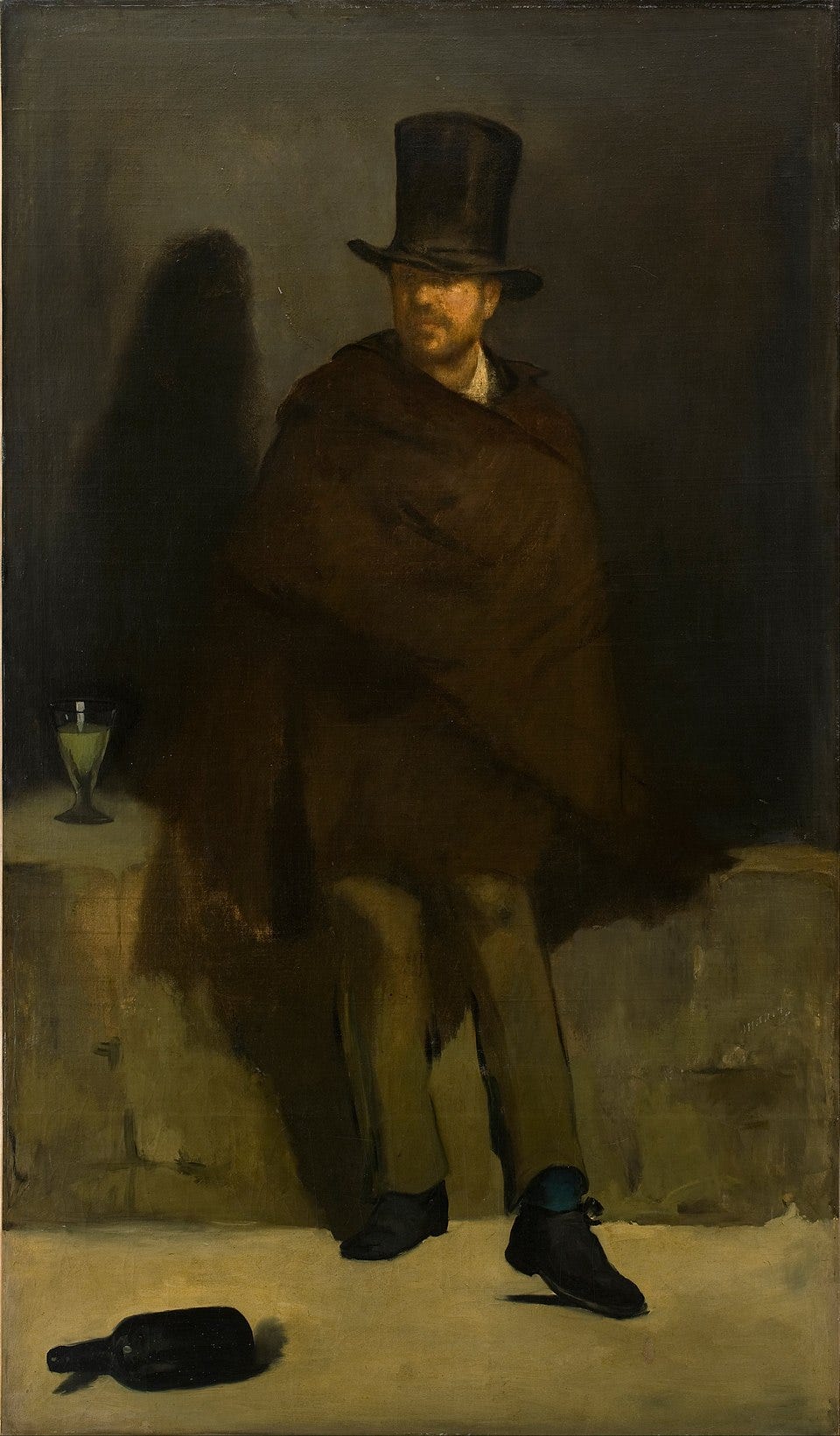Rejection and Family Secrets: The Early Days of Manet's Career
In the next installment of our series, we learn about Édouard Manet's initial setbacks and the secret at the heart of his personal life.
This essay is part of the series The Life of Édouard Manet. To read future essays in this series and gain access to the full archive, become a paid subscriber today:

If the weather was fair, one might see Édouard Manet strolling through the streets of Paris.
Manet was a consummate flaneur in the great Parisian tradition. The city was transforming before his eyes. The Bourbons were finished, Napoleon III was on the throne, and Baron Haussmann was tearing down medieval slums and broadening the streets. His vision was met with ire and disdain from many locals—they didn’t use the word “gentrification” in this context yet, but everyone knew that the poor were getting pushed out.
Despite all of Haussmann’s efforts, not every musician, dancer, prostitute, or drunk could be banished from his modern dream of Paris. Manet was fascinated by the city’s evolution, by its contrasts. As a young man from a wealthy family, his childhood was miles away from the discomforts of ordinary life. Often, we are drawn to the unfamiliar: Pierre-Auguste Renoir came from the working class and loved to paint the gilded beauties of the Parisian bourgeoisie, while Manet came from the landed gentry and often painted working men and women.
It’s easy in our more cynical times to roll our eyes at the class tourism, but it’s important to keep in mind how extraordinary this would have been to a 19th-century audience. In 1859, Impressionism had yet to be born, and the radical movement of the day was Realism. The Realists wished to portray the masses through an unvarnished lens, and their subject matter served as a statement that the lives of everyday people were worthy of artistic investigation. (As we’ll see later in our series, Impressionism took this a step further by breaking with traditional techniques and compositional norms.) Leading French Realists included Gustave Courbet, Rosa Bonheur, and Jean-François Millet.



